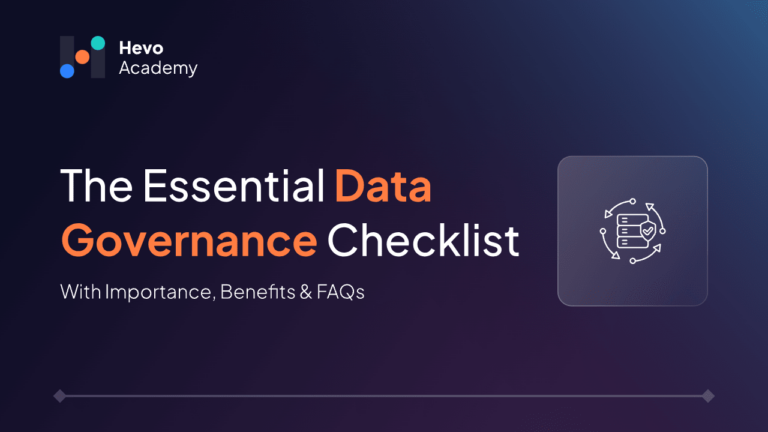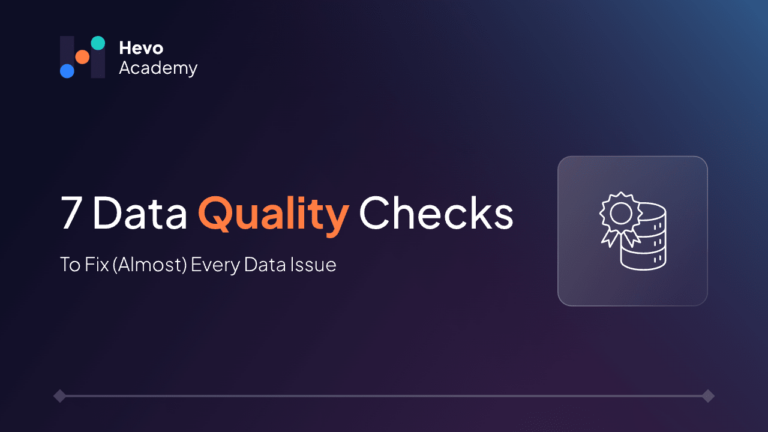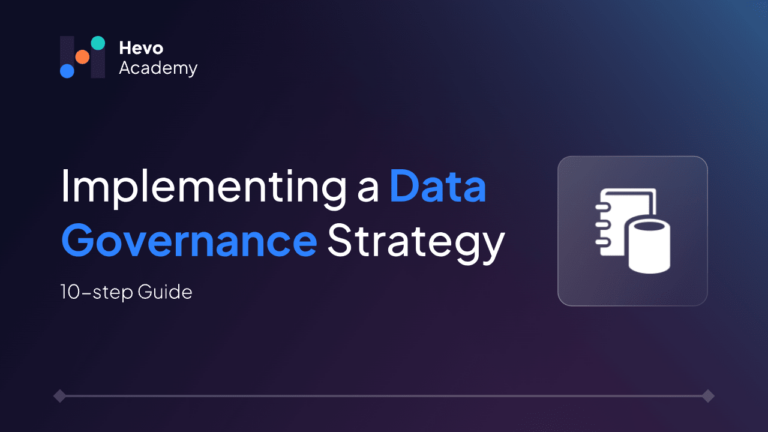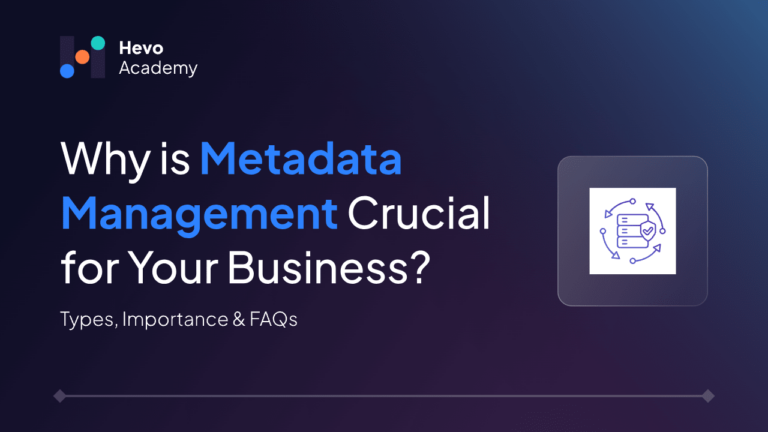Data is the most important asset in today’s business world. Organizations rely heavily on data to drive business decisions and gain a competitive edge. However, as data grows, it becomes difficult to manage, monitor, and hence govern it. This is where the need for systematic tools that can help manage, secure, and monitor data arises.
Table of Contents
This blog outlines a data governance checklist that can be structured to cater to the above needs. Whether your team is starting on a governance journey or looking to enhance and optimize existing frameworks, this checklist will guide you to set up a reliable, modern data management platform.
What is Data Governance?
Data Governance is a set of policies used to manage and monitor data throughout its lifecycle. It includes everything right from data quality control, security, compliance, managing users, and roles to decision-making authority. The goal of data governance is to maintain reliability and secure data. This helps organizations improve data quality and comply with regulations like GDPR or FERPA.
Master your data governance checklist while Hevo simplifies your data integrations. With 150+ connectors and in-flight transformations, Hevo ensures your data flows securely and efficiently, supporting your governance efforts.
Streamline your governance process—start your free trial with Hevo!
Get Started with Hevo for FreeThe Data Governance Checklist
Pre-requisites to consider
- Identify all the stakeholders and leaders and their roles and responsibilities. This will help you get feedback and make an inclusive data governance plan.
- Understand the requirements and desired business outcomes to set data governance goals.
- Check the current status of data governance. It is better to clearly document findings of existing data quality practices, policies, roles, and processes.
The following checklist tries to cover all the dimensions of data to help you build a robust framework for your use case.
1. Define Data Stewardship
It is important to define decision-making roles and who can wear those caps. The clear scope and limitations should be mentioned for better monitoring and data management.
- Define organization structure and roles according to scope.
- Communicate roles and clear scopes.
- Ensure stewards can correct data issues while safeguarding privacy. Provide suitable training to stewards.
- Monitor whether regular governance activities are being coordinated and organized by data stewards.
2. Standard Policies & Procedures
Defining and enforcing clear policies and procedures is important for establishing data governance. The plan should ensure that all organizational standards are met and that everybody understands it.
- Clearly define and document policies for data management throughout its lifecycle.
- Ensure compliance with privacy laws like FERPA and GDPR.
- Identify pre-existing policies that may interfere with or affect data governance policies.
- Conduct an organisation-wide assessment to check understanding of policies.
3. Cataloging
Documenting the data inventory and infrastructure is crucial to establishing your data framework. This guides you to target data security and management efforts in the right direction. Identifying sensitive data helps teams align security efforts. Not only should it be created once, but it should always be maintained as a single source of truth for updated data.
- Check if a catalog already exists for all the infra and data files.
- Maintain updated inventories of sensitive data and systems.
- Classify data by risk for proper management.
- Define policy to regulate what is included in an inventory and how, when, how often, and by whom it should be updated.
4. Data Usage and Purpose
Documentation of the purpose for which data was collected is necessary for local regulation and to meet compliance. This includes documenting all the decisions taken for collecting sensitive data, data management process optimization, and compliance around them.
- Check if a document already exists for all the datasets around the reason for their requirement, scope, and criticality.
- Check for pre-existing mechanisms for identifying PII data
- Define policy to regularly review the necessity of collected data elements.
- Communicate policies for handling records throughout all stages of the data lifecycle, including ingestion, processing, maintaining, using, and destroying data.
5. Data Quality
Without quality data, no organization can reach its desired goals. Hence ensuring data accuracy, relevance, and completeness is very important for any organization. This is a very important part of any data governance framework.
- Define policies to ensure that data is accurate, complete, and relevant to organization’s needs
- Conduct regular audits to ensure data is accurate, complete, and relevant.
6. Data Access
Most data breaches occur when culprits gain unauthorized access to data systems. It is important to define strict data access policies by differentiating data levels according to roles and clearly defining their scopes. This can help organizations prevent unauthorized access and minimize risk.
- Define access levels based on roles to prevent unauthorized access.
- Define procedural controls over data access, training, and confidentiality agreements for sensitive PII data.
- Regular audits to monitor data roles and access.
7. Data Security
Data security is a very important part of any data governance plan. This includes securing data at rest and transient. Mitigating the risks of unauthorized access to data is a top priority for any organization.
- Conduct risk assessment for all the data inventory
- Implement a comprehensive security framework, including password management, data storage, data access, and administration.
- Develop plans for mitigating risks, including breaches and disasters.
- Establish data-sharing procedures and agreements.
- Establish a disaster recovery plan for data so that continuity of data services is maintained.
- Regular audits for monitoring data security.
Importance and Benefits
A Data Governance Checklist can help organizations keep track and overseas if data is managed effectively and responsibly. Some benefits of the checklist include:
- Ensures Data Quality: The governance checklist helps maintain data integrity, accuracy, and consistency across systems, ensuring the trustworthiness of stored data.
- Compliance & Security: It helps organizations track data systems’ compliance with standards and policies. This is important to protect sensitive data from breaches.
- Improved Decision-Making: Implementing the data platform according to the checklist can make data more discoverable. This helps teams find insights easily and make better decisions.
- Operational Efficiency: A structured approach to governance streamlines processes, enhances productivity, and helps boost efficiency and cut costs.
- Risk Management: A data governance checklist helps minimize the risk of data misuse or loss for illegal purposes.
- Enhanced Collaboration: A data governance checklist can help define and establish clear roles and responsibilities. A better understanding of roles helps build effective collaboration between teams.
Conclusion
Any goal that is executed systematically can always be achieved. Similarly, the Data Governance checklist provides a strategy for organizations building or wanting to modify their existing governance framework. Implementing a data governance checklist is crucial for maintaining the security and reliability of data. This also ensures that all the compliances and policies are met. Hence, implementing a well-governed checklist improves operational efficiency and reduces any chance of risks.
Schedule a personalized demo with Hevo for seamless data integration.
FAQs
1. Who should use a data governance checklist?
All the data users and data maintainers, including data engineers and IT teams, should use the data governance checklist. Their shared responsibility is to ensure that data is secure, accurate, and accessible across the organization.
2. What are the 3 pillars of data governance?
The three pillars of data governance are Data Quality, Data Security, and Data Compliance. These pillars ensure that the data is of good quality, reliable, safe from unauthorized access, and meets standards and policies.
3. What are the four phases of data governance?
The four phases of data governance are Planning, Implementation, Monitoring, and Optimization. These phases help by providing a systematic path to setting up policies, implementing governance frameworks, and monitoring them.






